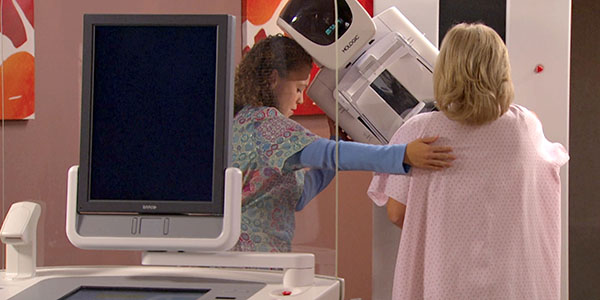CT office world supplier of new mammography technology
 A women”™s health company with a major presence in Danbury is quickly growing with its new 3-D mammography imager.
A women”™s health company with a major presence in Danbury is quickly growing with its new 3-D mammography imager.
The technology, also known as tomosynthesis, produces a 3-D image of the breast that allows radiologists to better screen for and detect breast cancer. Through a collection of slice-by-slice images, the size, shape and location of abnormalities are easier to pin point.
Hologic Inc. develops, manufactures and supplies women health care products. Its hub for breast health products, which makes up 45 percent of the company”™s sales, is based in Danbury. Its corporate headquarters is in Bedford, Mass.
“It”™s a phenomenal technology,” said Jim Culley, Hologic senior director of communications. “It”™s a technology that”™s perfect for breast cancer screening in that it finds cancers earlier that often would have been missed in conventional mammography.”
U.S. Sen. Richard Blumenthal and U.S. Rep. Chris Murphy toured the Danbury location Aug. 21, touting the state”™s successful business that might be expanding its facilities and acquiring more companies in the near future. The company recently acquired the blood-testing company Gen-Probe ”“ with a Stamford satellite office ”“ for $3.7 billion.
The congressmen spoke with local breast cancer experts, saw a demonstration of 3-D mammography and toured Hologic”™s manufacturing plant. Connecticut has been considered a leader in breast health and in 2009 Connecticut was the first state to require breast density scores after women received mammograms.
More than half of all women have difficult-to-read breasts, as tissues and cancer are both white. Two crossed veins can look like an abnormality using standard 2-D technology and dense breast tissue can make it more difficult to find abnormalities.
About 10 percent of women are called back for more testing based on false readings, which Culley said can unnecessarily make a large number women feel very uncomfortable for several days. Sites studying the 3-D technology reported over 40 percent less recalls and a 47 percent increase in cancer detection.
For years, film screenings, which had to be held up in the light to read, were the standard technology for mammograms. It wasn”™t until 2000 that the U.S. Food and Drug Administration approved the first digital technology, 2-D mammography, which is now the standard.
Though Hologic didn”™t pioneer 3-D technology, it”™s the only FDA-approved manufacturer in the country, selling the imager worldwide. There is one other FDA-approved company in Europe.
It can take time for hospitals and medical centers to adapt to new technologies, but hundreds are currently on board, including an estimated 50 percent of all freestanding mammogram centers.
Currently five hospitals in Connecticut use the 3-D imager, including Danbury Hospital and Yale-New Haven Hospital, which was a beta test site. The company also supplies 2-D mammograms and film systems worldwide.
Federal regulations mandate mammography reimbursements, but 3-D mammography isn”™t covered. Medical centers with the technology have to assess an extra fee for patients that choose to use it. Once reimbursements are available however, Culley said he expects the technology will become the standard, replacing 2-D mammograms within a couple years.